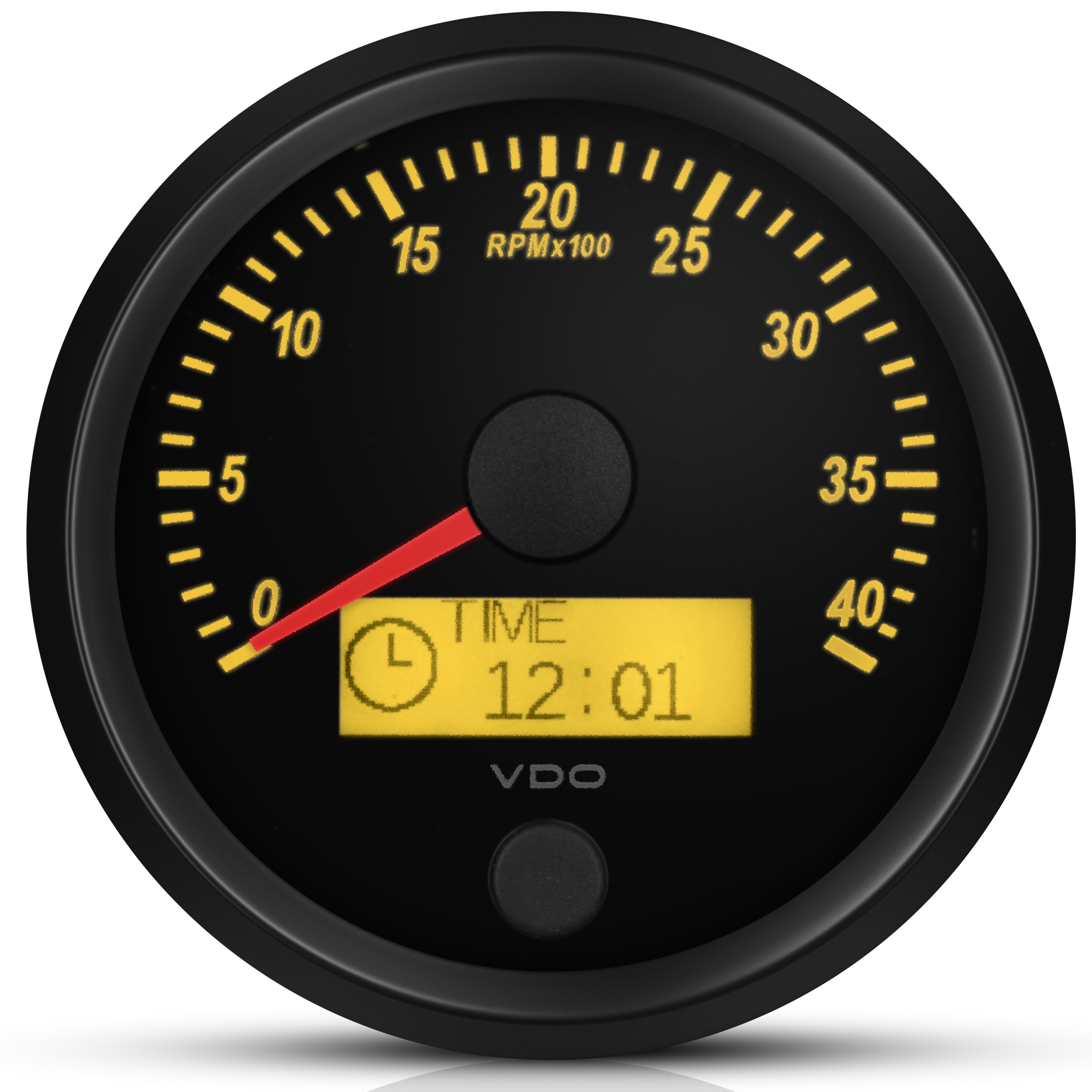The Advantages of Setting Up a Tachometer in Your Car
The Advantages of Setting Up a Tachometer in Your Car
Blog Article
The Value of a Tachometer in Keeping An Eye On Engine Speed and Efficiency in Automotive Applications
In the realm of automotive engineering, the tachometer stands as a critical instrument in the vehicle driver's arsenal, offering a straight home window into the inner workings of a car's engine. Beyond its function as a simple gauge of transformations per minute (RPM), the tachometer serves as a vital device for fanatics and specialists alike, offering real-time understandings right into engine efficiency and wellness.
Value of Checking Engine RPM
Monitoring engine RPM, or changes per min, is an essential facet of vehicle maintenance and efficiency examination. Engine RPM directly correlates with the rate at which the engine's crankshaft revolves, suggesting exactly how swiftly the engine is running - tachometer. By monitoring RPM, technicians can analyze the wellness of the engine, find potential concerns, and fine-tune efficiency. An irregular RPM analysis may signal troubles such as engine misfires, damaged trigger plugs, or problems with the fuel distribution system. Constantly high RPM readings might indicate hostile driving routines or the need for a greater equipment shift to boost fuel performance.
Additionally, checking engine RPM is important for performance examination in auto racing and high-performance vehicles. In summary, keeping an eye on engine RPM is not only crucial for identifying issues but likewise for enhancing engine efficiency in numerous automobile applications.

Advantages of Real-Time Information
In auto applications, real-time information plays a crucial function in giving instantaneous understandings right into the efficiency and problem of the lorry. By continually checking various parameters such as engine speed, temperature, fuel consumption, and more, real-time information uses many advantages that add to improved efficiency and safety when traveling.
Furthermore, real-time data promotes performance optimization by offering instant feedback on driving practices and engine efficiency. Drivers can change their behavior in real-time based on this information to attain much better gas economy and lengthen the life expectancy of their vehicle.

Furthermore, real-time data plays a crucial duty in modern-day vehicle diagnostics, enabling specialists to rapidly identify and attend to breakdowns. This results in lowered downtime, lower maintenance costs, and ultimately, improved general car reliability and long life (tachometer). By taking advantage of the power of real-time information, automotive stakeholders can make informed choices that positively impact both the efficiency and durability of the automobile
Effect on Gear Shifts
Efficient equipment changes in auto applications dramatically affect general have a peek at these guys performance and driving experience. The tachometer plays a crucial function in maximizing gear changes by giving real-time engine speed information to the motorist. When coming close to the redline on the tachometer, it signifies the vehicle driver to upshift to stop over-revving the engine and triggering potential damages. On the other hand, downshifting at the best moment can help maintain the engine in its power band, guaranteeing responsive acceleration when needed.
Additionally, the tachometer help in attaining smoother gear changes, particularly in hand-operated transmissions. By keeping track of engine rate, chauffeurs can carry out equipment shifts at the optimum RPM variety, lowering snagging movements and lessening wear on the transmission components. This precision in equipment adjustments not only boosts driving convenience yet likewise adds to fuel performance.
Enhancing Fuel Efficiency
Provided page the critical duty the tachometer plays in maximizing equipment shifts for performance and engine health and wellness, it straight adds to taking full advantage of fuel effectiveness in automotive applications. By offering real-time feedback on engine rate, the tachometer assists chauffeurs in maintaining one of the most effective RPM variety for fuel economic climate. When chauffeurs consistently monitor the tachometer and adjust their driving behaviors accordingly, they can avoid unneeded gas usage triggered by over-revving or carrying the engine.
Furthermore, the tachometer aids motorists recognize one of the most fuel-efficient gear to be in at any type of provided minute, preventing the engine from working tougher than essential. This is especially critical during acceleration and cruising, where being in the ideal equipment can considerably impact fuel effectiveness. Additionally, the tachometer can notify vehicle drivers to possible mechanical issues that can be negatively affecting fuel economy, such as a sliding clutch or a stopped up air filter. In final thought, the tachometer functions as a valuable device in boosting fuel effectiveness by advertising ideal driving behaviors and determining areas for enhancement in the car's efficiency.

Making Best Use Of Engine Durability
The tachometer's role in checking engine rate and efficiency is important in making certain the durability of automotive engines. Keeping an eye on the tachometer permits vehicle drivers to stay within the suggested RPM array for their vehicle, stopping unneeded pressure on the engine and expanding its life expectancy.

Verdict
To conclude, the tachometer plays a crucial duty in monitoring engine rate and performance in auto applications. By supplying real-time information on RPM, it enables efficient gear shifts, improved gas effectiveness, and made best use of engine long life. This tool is important for maintaining ideal engine performance and guaranteeing the overall functionality of an automobile.
Report this page